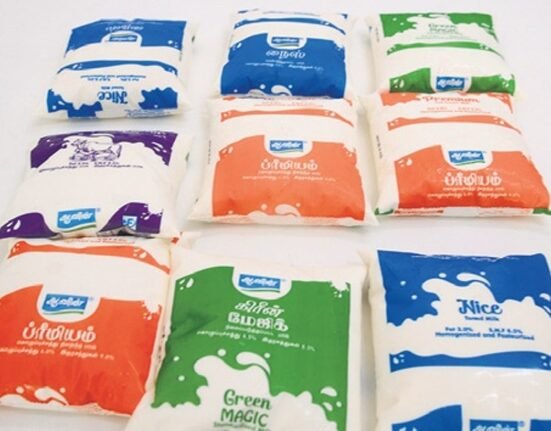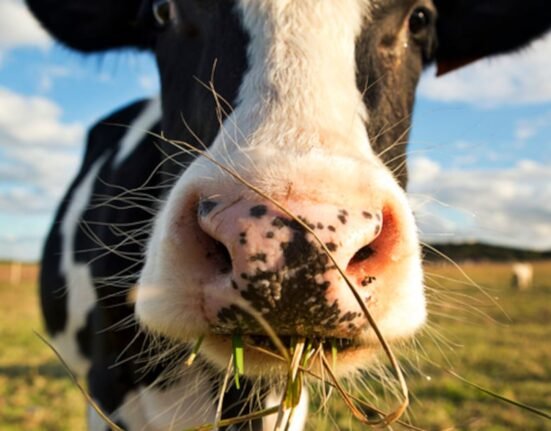Mumbai | July 2025 ‚ÄĒ An early and vigorous Southwest Monsoon has dramatically accelerated India’s kharif sowing season, reviving hopes for both the agricultural and dairy sectors after months of climatic uncertainty. As of July 21, farmers across the country have covered over 71 million hectares‚ÄĒnearly 65% of the season’s average target‚ÄĒmarking a decisive upswing compared to the previous year.
With rainfall 7% above normal this season, and a surge of 31% in North-West India during mid-July, the sowing momentum is expected to positively influence livestock fodder availability, feed costs, and ultimately milk yields across India’s dairy belt.
ūüöú Cropping Trends: Food Security Meets Feed Opportunity
Rice Dominates Early Planting
Paddy cultivation has surged ahead of schedule, with farmers responding to timely rainfall, increased Minimum Support Prices (MSP), and irrigation assurance. According to the USDA’s latest GAIN report, rice acreage is already outpacing 2024 figures in many states.
Pulses and Oilseeds Surge
Short-duration pulses such as moong and urad have seen significant expansion. Oilseed planting, especially soybean and groundnut, has also gained traction‚ÄĒa development that holds downstream benefits for dairy producers via potential increases in protein-rich oilcake availability.
Coarse Cereals: A Mixed Bag
India’s “Shri Anna” millet campaign finds mixed results: bajra and sorghum planting is up, while crops like ragi and maize remain slightly behind schedule. Given their value in livestock diets, trends in millet sowing are being closely monitored by dairy cooperatives and feed manufacturers.
ūüźĄ Implications for India’s Dairy Sector
1. Forage Abundance Ahead:
Higher acreage in green fodder crops such as maize, sorghum, and bajra spells improved on-farm feed availability. This is expected to reduce reliance on costly commercial cattle feed and could improve dairy margins‚ÄĒespecially for smallholder farmers.
2. Milk Yield Prospects Brighten:
A more abundant and nutritious forage base enables higher inclusion of roughage and energy-dense rations in dairy diets, enhancing milk productivity and animal health. With milk procurement prices stabilising, higher yields will help support the resilience of farmer incomes.
3. Feed Cost Dynamics in Flux:
While forage supplies may ease, rising cereal demand could lead to increased prices of feed concentrates. Dairy stakeholders must closely monitor maize and wheat prices throughout the harvest season to effectively manage formulation costs.
ūüí¨ Expert Insight
‚ÄúThis monsoon could be a game-changer for dairy farmers. Timely sowing of key fodder crops will ease the green fodder deficit, which has plagued India‚Äôs dairy sector for years. The key now lies in proper harvesting, silage storage, and balanced rationing.‚ÄĚ
‚ÄĒ Prashant Tripathi, Dairy Expert
ūüďä What to Watch Next
- Fodder Harvest Timelines: Early maize and sorghum will enter the harvest cycle by late August, which is critical for silage operations.
- Input Cost Index: Variations in fertiliser and labour costs will impact profitability across dairy‚Äďcrop integration systems.
- Feed Quality Monitoring: With the introduction of new fodder supplies to the market, quality checks and mycotoxin risks must be effectively mitigated.
ūüĆĪ Strategic Outlook for Dairy Cooperatives & Feed Companies
This sowing surge is not just an agriculture win‚ÄĒit’s a feed security inflexion point. Dairy cooperatives, particularly in states such as Punjab, jab,¬†Maharashtra, and Karnataka, capitalise on improved fodder access by promoting on-farm production, balanced feeding, and ration advisory services.
Private feed manufacturers, meanwhile, may find opportunities in value-added concentrates and customised feed premixes tailored to regional forage balances.
ūüďĆ Final Word
The monsoon’s early onset has sparked optimism in India’s rural economy‚ÄĒbut it’s the dairy sector that could quietly emerge as a beneficiary of this kharif revival. Timely rainfall and thoughtful fodder planning might turn this sowing season into a sustainability success story for Indian dairying.







